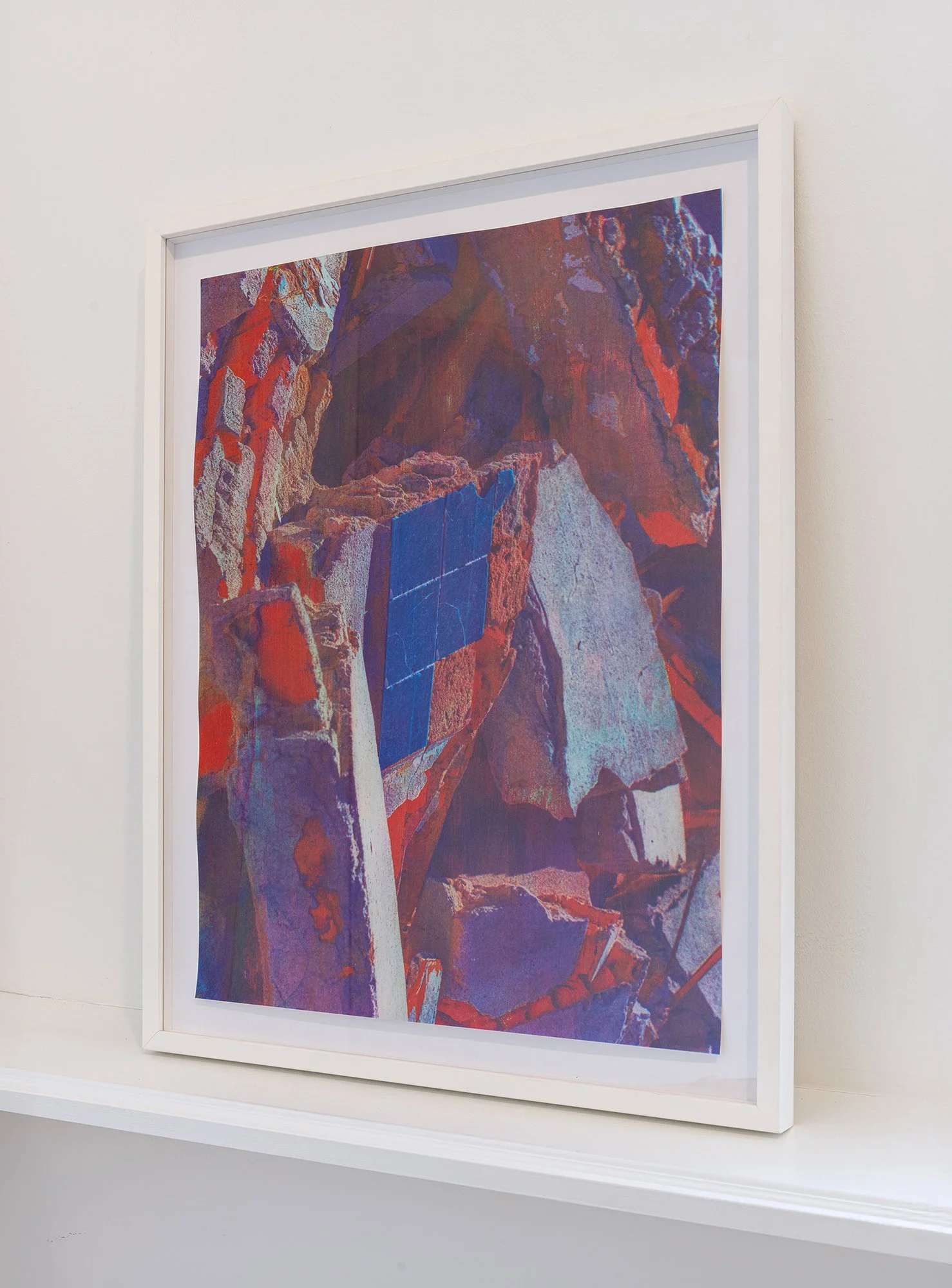Salt and Bone
Works by Claudia Kaatziza Cortínez
On view: Sept 20 – Nov 1, 2025
Opening Reception: Saturday, Sept 20, 4–6 PM
Furnace – Art on Paper Archive
107 Main Street, Falls Village, CT
Salt and Bone is an exhibition that explores memory, transformation, and the marks left in built landscapes. Photographs of the salt-crystallized ruins of Villa Epecuén and the labyrinthine Chacarita Cemetery in Buenos Aires capture the textures and histories inscribed in architecture and nature, as well as the layered, physical experience of these spaces.
Printed as gum bichromate and toned cyanotypes on paper, linen, and silk, these analogue processes use pigments and light-sensitive chemistry to experiment with color, surface, and materiality. In the Epecuén series, salt-bleached trees rise alongside the skeletal remains of the once-flooded town, reimagined as vivid, spectral figures; in Chacarita, the complex stairwells and galleries convey the immersive, maze-like scale of the monumental cemetery. Across both sites, the works consider how landscapes and structures hold history, memory, and the body’s presence within them, exploring what is submerged and what endures.
Read the Artnet article by Katya Kazakina about the exhibition HERE











